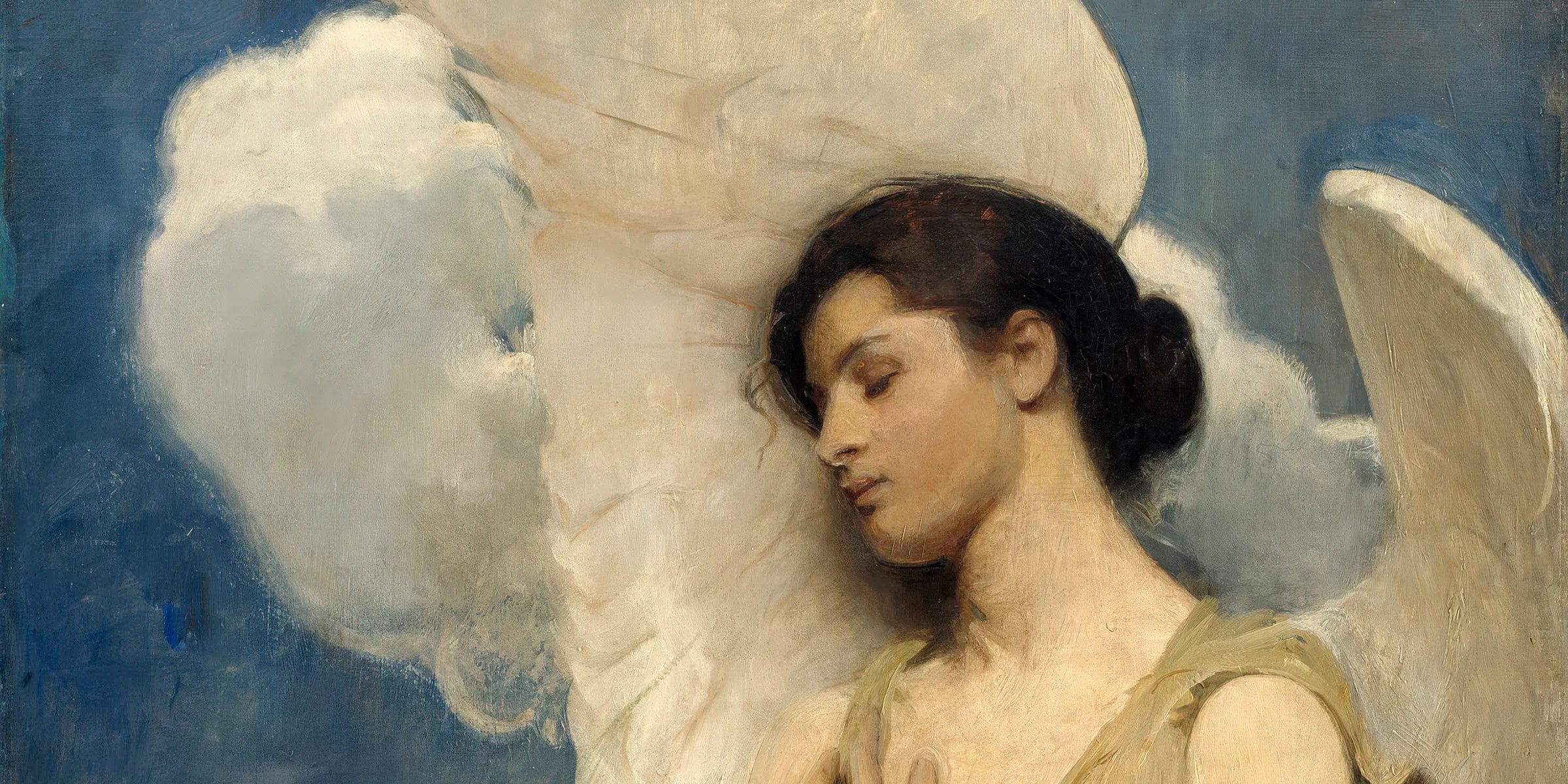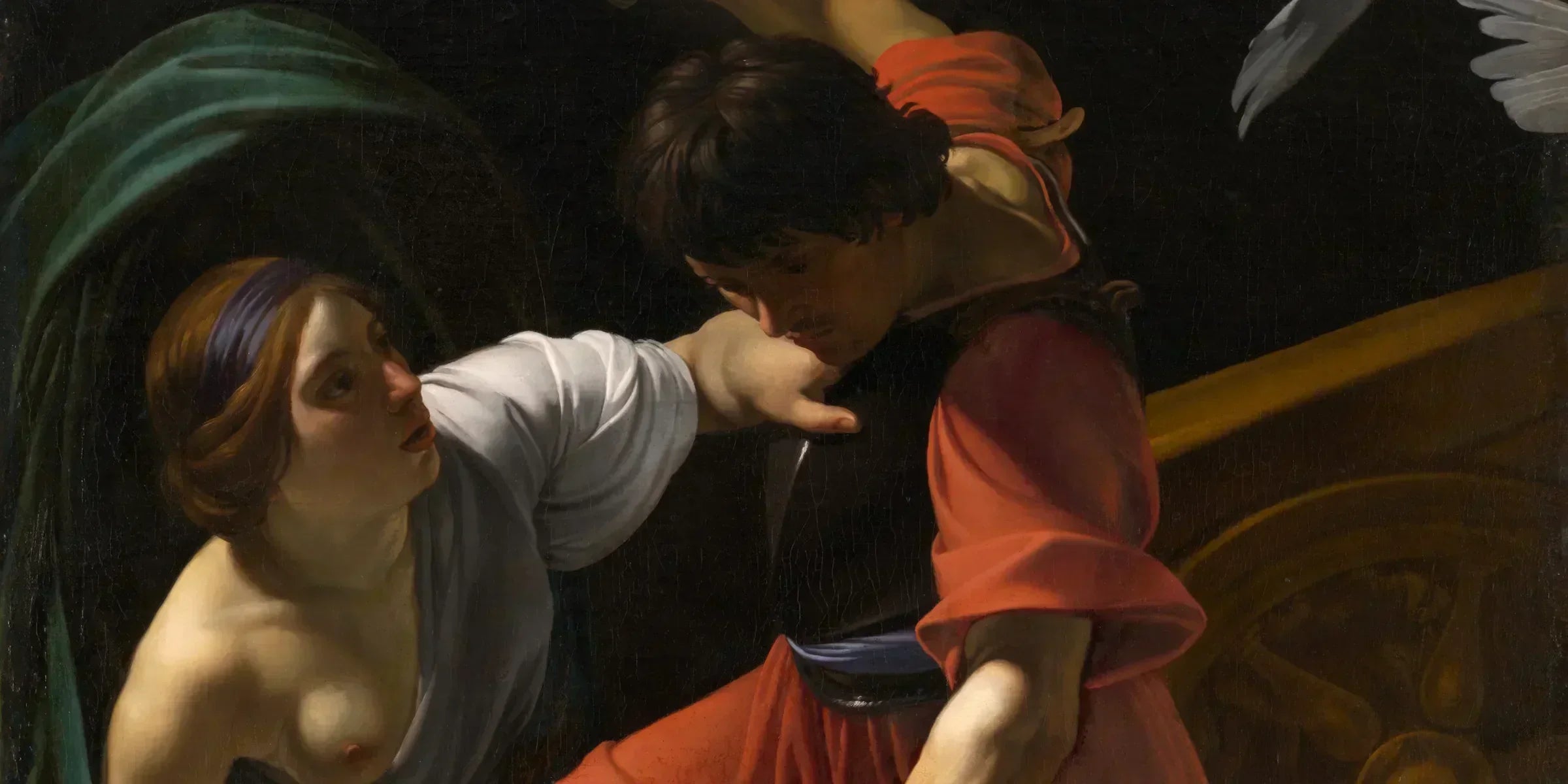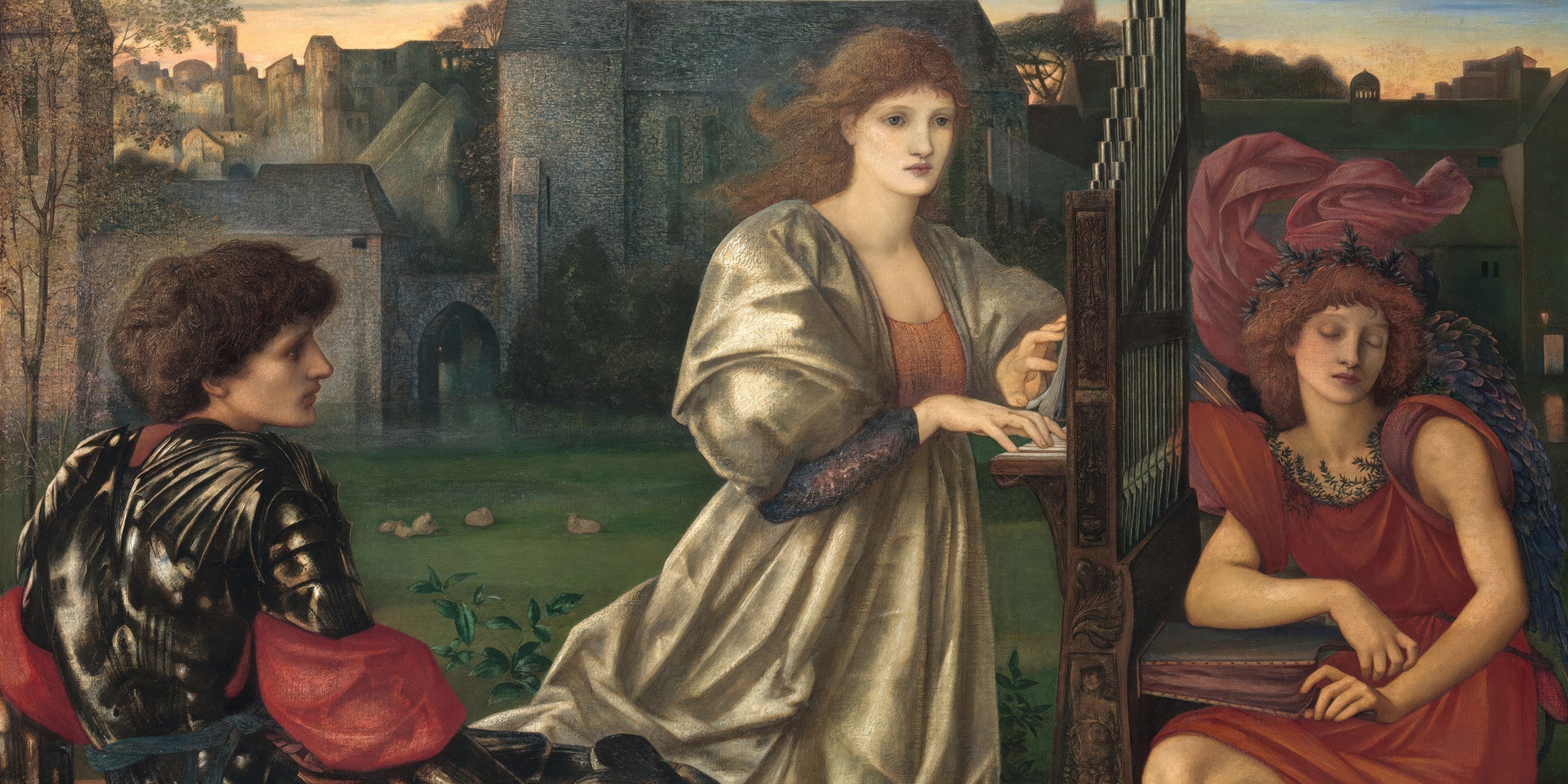Love hurts, or so they say. But in William-Adolphe Bouguereau’s The Girl Defending Herself Against Eros (1880), love isn’t just metaphorically painful—it comes in the form of a mischievous cherub with a bow and arrow. The painting captures a young woman playfully fending off Cupid himself, her expression a mix of amusement and mild alarm.
A Romantic Vision in the Age of Realism
Bouguereau, a French academic painter known for his impeccable technique and idealized figures, thrived in the 19th century, an era when realism and impressionism were stealing the spotlight. While artists like Monet and Manet were busy smearing paint around and reinventing light, Bouguereau stuck to the classical approach, rendering every curl of hair and draped fabric with near-photographic precision. His works were the darlings of the French Academy—smooth, flawless, and emotionally evocative.

Technique: A Masterclass in Softness
One look at this painting, and you’ll notice Bouguereau’s hallmark—an ethereal softness. The girl’s skin is luminous, her drapery delicate, and Cupid’s wings almost seem to flutter. Bouguereau’s use of sfumato (a Renaissance technique of blending tones seamlessly) gives the figures a dreamlike quality. And let’s be honest, if real-life skin looked this perfect, beauty industries worldwide would go bankrupt overnight.
Love is a Battlefield—Or at Least a Playground
The subject matter is both playful and timeless. The young girl, dressed in a flowing classical gown, pushes Cupid away with a teasing smile, as if she knows exactly what trouble his arrows can bring. Eros, the tiny winged troublemaker, insists on doing his job—because, well, divine matchmaking is serious business. The dynamic interaction between them makes the painting feel alive, as if they might move at any second.
Fun Facts You Didn’t Know You Needed
-
Cupid’s Resume is Impressive. In mythology, once Cupid’s arrow hits, there’s no going back. (Which might explain some truly regrettable relationship choices throughout history.)
-
Bouguereau’s Secret Fan Club. Though often dismissed as old-fashioned in his time, Bouguereau’s hyperrealistic style has made a huge comeback. Today, he’s a favorite among contemporary painters who admire his technical wizardry.
-
Eros: The OG Matchmaker. If dating apps existed in ancient Greece, Eros would be their CEO.
Closing Thoughts: Bring Some Mischief Home
If The Girl Defending Herself Against Eros speaks to you—whether as a romantic dreamer or someone who’s dodged their fair share of love arrows—you’re in luck. A reproduction of this playful masterpiece could add a touch of classical elegance (and a wink of humor) to your home. Browse our Bouguereau collection and let’s see if Eros can strike again—this time, on your walls!








